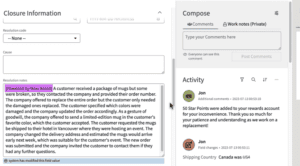Nos últimos anos, a Inteligência Artificial (IA) tem desempenhado um papel cada vez mais importante em diversas áreas, impulsionando a inovação e a automação. Entre os diversos tipos de IA, destaca-se a IA generativa, uma categoria que vem ganhando destaque devido à sua capacidade de criar novos conteúdos de forma autônoma. Neste artigo, exploraremos os diferentes tipos de IA generativa e seu impacto na integração da GenAI na plataforma ServiceNow.
Qual é a diferença entre IA generativa e IA?
A principal diferença entre a IA generativa e a IA tradicional reside na forma como esses sistemas aprendem e produzem resultados. Enquanto a IA tradicional se baseia em algoritmos pré-programados e dados rotulados para realizar tarefas específicas, como reconhecimento de padrões ou tomada de decisões, a IA generativa utiliza modelos de aprendizado profundo para gerar novos conteúdos de forma autônoma.
Enquanto a IA tradicional é mais orientada a dados e reativa, respondendo a entradas específicas com saídas predefinidas, a IA generativa tem a capacidade de criar novos dados, como texto, imagens ou vídeos, a partir de um conjunto inicial de exemplos. Isso a torna especialmente útil em áreas como geração de conteúdo criativo, tradução automática, design assistido por computador e muito mais.
Quais são os tipos de IA generativa?
Geração de texto
Um dos tipos mais comuns de IA generativa é a geração de texto, onde modelos de linguagem são treinados em grandes conjuntos de dados de texto para gerar novas palavras, frases e até mesmo textos completos de forma coerente e semântica.
Geração de imagem
Outra aplicação importante da IA generativa é a geração de imagens, onde redes neurais são treinadas em conjuntos de dados de imagens para criar novas imagens realistas que muitas vezes parecem ter sido produzidas por humanos.
Geração de vídeo e fala
Além da geração de texto e imagem, a IA generativa também pode ser usada para criar vídeos e fala sintéticos, permitindo a produção automatizada de conteúdo audiovisual personalizado.
Aumento de dados
Por fim, a IA generativa pode ser empregada no aumento de dados, gerando exemplos adicionais para enriquecer conjuntos de dados de treinamento e melhorar o desempenho de modelos de IA em diversas tarefas.
Integração da GenAI na ServiceNow
A integração da GenAI na plataforma ServiceNow oferece uma série de benefícios para as organizações que buscam aumentar sua eficiência operacional e automatizar processos repetitivos.
Automação de Tarefas Repetitivas
A GenAI pode ser utilizada para automatizar uma variedade de tarefas repetitivas, como triagem de e-mails, categorização de tickets de suporte e encaminhamento de solicitações, liberando recursos humanos para atividades mais estratégicas.
Suporte ao Cliente e Resolução de Problemas

Ao integrar a GenAI ao sistema de suporte ao cliente da ServiceNow, as empresas podem fornecer respostas rápidas e precisas a perguntas frequentes, resolver problemas comuns de forma automatizada e oferecer assistência personalizada aos usuários.
Predição e Análise de Dados
A GenAI pode ser usada para analisar grandes volumes de dados e identificar padrões, tendências e insights ocultos que podem ajudar as empresas a tomar decisões mais informadas e prever resultados futuros com maior precisão.
Personalização
Com a integração da GenAI, as empresas podem personalizar a experiência do usuário, oferecendo recomendações personalizadas, conteúdo sob medida e suporte individualizado com base nas preferências e histórico de interações de cada usuário.
Impacto na Eficiência e Automação
A utilização da GenAI na ServiceNow pode ter um impacto significativo na eficiência operacional, na experiência do usuário, na inovação e na gestão de riscos e compliance das empresas.
Aumento da Eficiência Operacional
Automatizando tarefas repetitivas e simplificando processos complexos, a GenAI pode ajudar as empresas a reduzir custos, otimizar recursos e aumentar a produtividade de suas equipes.
Melhoria da Experiência do Usuário

Ao fornecer respostas rápidas e precisas, personalizar interações e simplificar o acesso à informação, a integração da GenAI na ServiceNow pode melhorar significativamente a experiência do usuário, aumentando a satisfação e a fidelidade do cliente.
Inovação Acelerada

Ao automatizar tarefas operacionais e liberar recursos para atividades mais criativas e estratégicas, a GenAI pode impulsionar a inovação dentro das organizações, permitindo o desenvolvimento de novos produtos, serviços e soluções de forma mais rápida e eficiente.
Gestão de Riscos e Compliance
Ao analisar grandes volumes de dados e identificar padrões de comportamento suspeito ou atividades não conformes, a GenAI pode ajudar as empresas a detectar e mitigar riscos, garantindo a conformidade com regulamentações e políticas internas.
Histórico
Desde a sua fundação, o campo do aprendizado de máquina tem utilizado modelos estatísticos, incluindo modelos generativos, para modelar e prever dados. A partir do final dos anos 2000, o surgimento da aprendizagem profunda impulsionou o progresso e a pesquisa em processamento de imagens e vídeos, análise de texto, reconhecimento de fala e outras tarefas. No entanto, a maioria das redes neurais profundas foram treinadas como modelos discriminativos que realizam tarefas de classificação, como classificação de imagens baseadas em redes neurais convolucionais.
Em 2014, avanços como o autoencoder variacional e a rede adversária generativa produziram as primeiras redes neurais profundas práticas capazes de aprender modelos generativos, em vez de discriminativos, a partir de dados complexos, como imagens. Esses modelos generativos profundos foram os primeiros capazes de gerar não apenas rótulos de classes para imagens, mas também imagens inteiras.
Em 2017, a rede Transformer permitiu avanços em modelos generativos, levando ao primeiro transformador generativo pré-treinado em 2018.20 Seguiu -se em 2019 o GPT-2 , que demonstrou a capacidade de generalizar não supervisionado para muitas tarefas diferentes como modelo fundacional.
Em 2021, o lançamento do DALL-E, um modelo de pixel generativo baseado em transformador, seguido por Midjourney e Stable Diffusion marcou o surgimento da arte prática de IA de alta qualidade a partir de pistas de linguagem natural.
Em janeiro de 2023, Futurism.com divulgou a história de que a CNET estava usando uma ferramenta interna de IA não revelada para escrever pelo menos 77 de suas histórias; Depois que a notícia foi divulgada, a CNET publicou correções em 41 das histórias.
Em março de 2023, foi lançado o GPT-4. Uma equipe da Microsoft Research argumentou que “poderia razoavelmente ser visto como uma versão inicial (mas ainda incompleta) de um forte sistema de inteligência artificial (FAI)”.
Em abril de 2023, o tablóide alemão Die Aktuelle publicou uma entrevista falsa gerada por IA com o recluso ex-piloto de corrida Michael Schumacher. A história incluía duas revelações possíveis: a capa incluía a frase “enganosamente real” e dentro da revista reconhecia no final da entrevista que a entrevista foi gerada por IA. O editor-chefe foi demitido logo depois em meio à polêmica.
O Futuro da IA Generativa na ServiceNow e Além
A rápida evolução da inteligência artificial, especialmente a IA generativa, está redefinindo o panorama dos negócios. A ServiceNow Inc., reconhecendo o potencial transformador dessas tecnologias, tem investido significativamente em ai capabilities para sua plataforma. A integração do generative ai controller e do ai controller está no centro dessa estratégia, permitindo que as organizações otimizem seus business goals e alcancem novos patamares de operational efficiency.
Transformando Fluxos de Trabalho com IA
A capacidade de streamline workflows e implementar workflow automation é crucial para a competitividade moderna. A ai in servicenow, impulsionada por machine learning e language models, está permitindo a automação de repetitive tasks, liberando os funcionários para atividades mais estratégicas. O flow designer da ServiceNow, combinado com ai agents, está simplificando a criação de fluxos de trabalho personalizados, melhorando a user experience e a employee experiences.
Avanços na Gestão de Serviços e Ativos
A configuration management database cmdb e a configuration management são elementos vitais para a gestão de serviços de TI. A predictive intelligence, alimentada por ai models, está aprimorando a capacidade de prever e prevenir incidentes, otimizando a operations management. A asset management e o software asset management também estão se beneficiando da IA, com a automação da descoberta de ativos e a otimização do uso de software.
Melhorando a Experiência do Cliente e do Funcionário
A customer service management csm e o field service management fsm estão sendo revolucionados pela IA. O assist powered by generative ai está permitindo a criação de knowledge articles mais eficazes e a resolução de problemas de forma mais rápida. A customer experiences estão sendo personalizadas com base em natural language e análise de dados, enquanto a employee experiences estão sendo aprimoradas com suporte personalizado e automação de tarefas administrativas, como o human resource.
Governança, Risco e Conformidade na Era da IA
A governance risk and compliance (GRC) é uma área crítica que está sendo impactada pela IA. A capacidade de analisar grandes volumes de dados e identificar padrões de risco está permitindo uma gestão de riscos mais eficaz. A data quality e a conformidade com regulamentações estão sendo aprimoradas com a automação de processos de auditoria e monitoramento.
O Papel da IA Generativa na Criação de Conteúdo e Geração de Código
A content creation está sendo transformada pela IA generativa. A capacidade de gerar texto, imagens e vídeos de forma automática está permitindo a criação de conteúdo personalizado em escala. Além disso, a code generation, impulsionada por ai models, está acelerando o desenvolvimento de aplicativos e a personalização da plataforma app engine.
Histórias de Sucesso e o Futuro da IA na ServiceNow
As success stories de empresas que implementaram a IA na ServiceNow demonstram o potencial transformador dessas tecnologias. A digital transformation está sendo acelerada com a automação de processos, a melhoria da experiência do usuário e a otimização da gestão de serviços. A diversity and inclusion também estão sendo impulsionadas com a criação de experiências personalizadas e acessíveis para todos os usuários.
O futuro da IA na ServiceNow é promissor. A medida que a tecnologia continua a evoluir, podemos esperar avanços ainda maiores em ai agents, ai capabilities, e na forma como as empresas utilizam a plataforma para alcançar seus objetivos estratégicos. A adoção de powered by generative ai e ai controller, junto com o uso de language models e machine learning, solidificará a servicenow platform como líder na revolução da inteligência artificial dentro do ambiente corporativo.
Conclusão
Em resumo, a IA generativa oferece uma abordagem inovadora para a criação de conteúdo e a resolução de problemas, permitindo que as empresas gerem novos insights, automatizem processos e melhorem a experiência do usuário.
A introdução da GenAI na ServiceNow está configurada para transformar as operações de TI e de negócios, oferecendo níveis sem precedentes de automação, eficiência e personalização. Enquanto as empresas buscam se adaptar a essas mudanças, é crucial que também considerem as implicações éticas e de privacidade associadas ao uso avançado de tecnologias de IA. No entanto, com a implementação cuidadosa e a governança adequada, a GenAI na ServiceNow tem o potencial de impulsionar significativamente o desempenho empresarial e a inovação.



